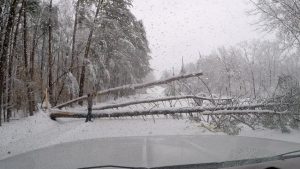
By Rich McKay
(Reuters) – The deadly winter storm that clobbered a swath of the U.S. Midwest and East Coast over the weekend is blowing out to sea but leaves as much as 13 inches of snow in Washington, D.C. and Virginia, and frigid arctic air parked over New England.
All Washington D.C. federal offices would be closed on Monday, but train and bus service in the metro D.C. area would resume after being shut down on Sunday, officials said.
“There’s some digging out to do,” Jim Hayes, a forecaster with the National Weather Service’s Weather Prediction Center in College Park, Maryland, said early Monday.
“In Virginia, D.C. and Maryland, 6-to-12 inches of snow fell with some places getting 13 inches,” he said.
The good news is that around noon on Monday the clouds should start clearing and temperatures will rise into the low 40’s Fahrenheit, Hayes said.
The snowstorm is blamed for the deaths of at least eight people in road accidents across the U.S. Midwest and possibly also the death of an Illinois state police officer who was killed on Saturday during a traffic stop, officials said.
Air traffic at Ronald Reagan National Airport and Dulles International Airport was returning to normal. Early on Monday, fewer than 400 flights were canceled in affected areas and about 1,600 were delayed, according the online flight tracking site FlightAware.
At the height of the storm, more than 1,600 flights were canceled in and out of U.S. airports on Sunday, the bulk of them at Washington’s Reagan and Dulles, the website reported.
Winter storm warnings for millions of Americans in 10 states and Washington, D.C., were being lifted early Monday in a swath of the United States from Colorado to the East Coast, Hayes said.
“But up north it’s going to stay cold,” Hayes said.
Boston temperatures will creep up from the teens (Fahrenheit) into the low 20s. Temperatures in Portland, Maine will top-out at 11 degrees Fahrenheit (minus 12 Celsius) as a core of Arctic air stays parked over New England, Hayes said.
“The worst is in Big Black River, Maine,” said Hayes. “It hit minus 20 (minus 29 Celsius) overnight.”
(Reporting by Rich McKay in Atlanta; Editing by Peter Graff)










